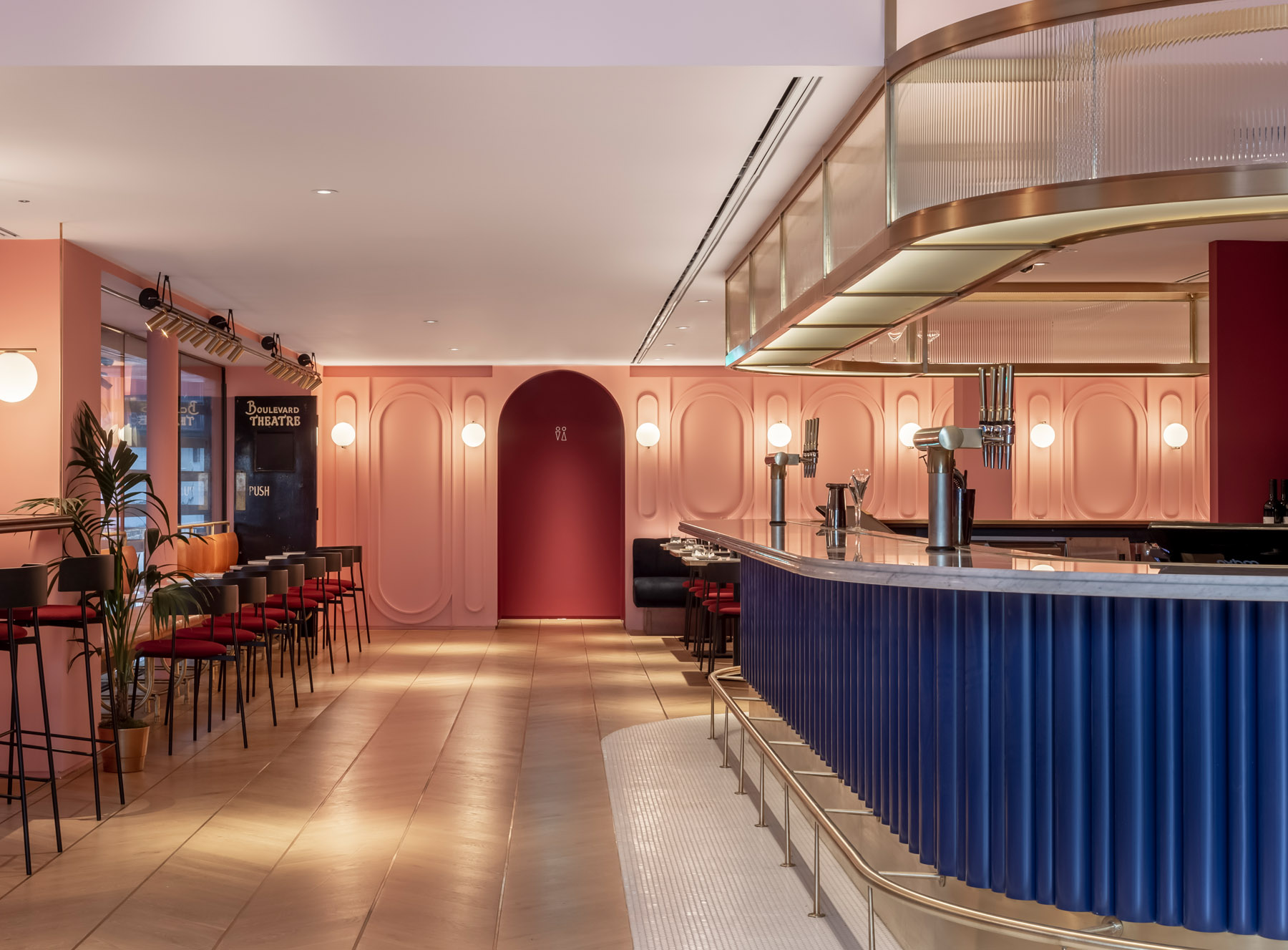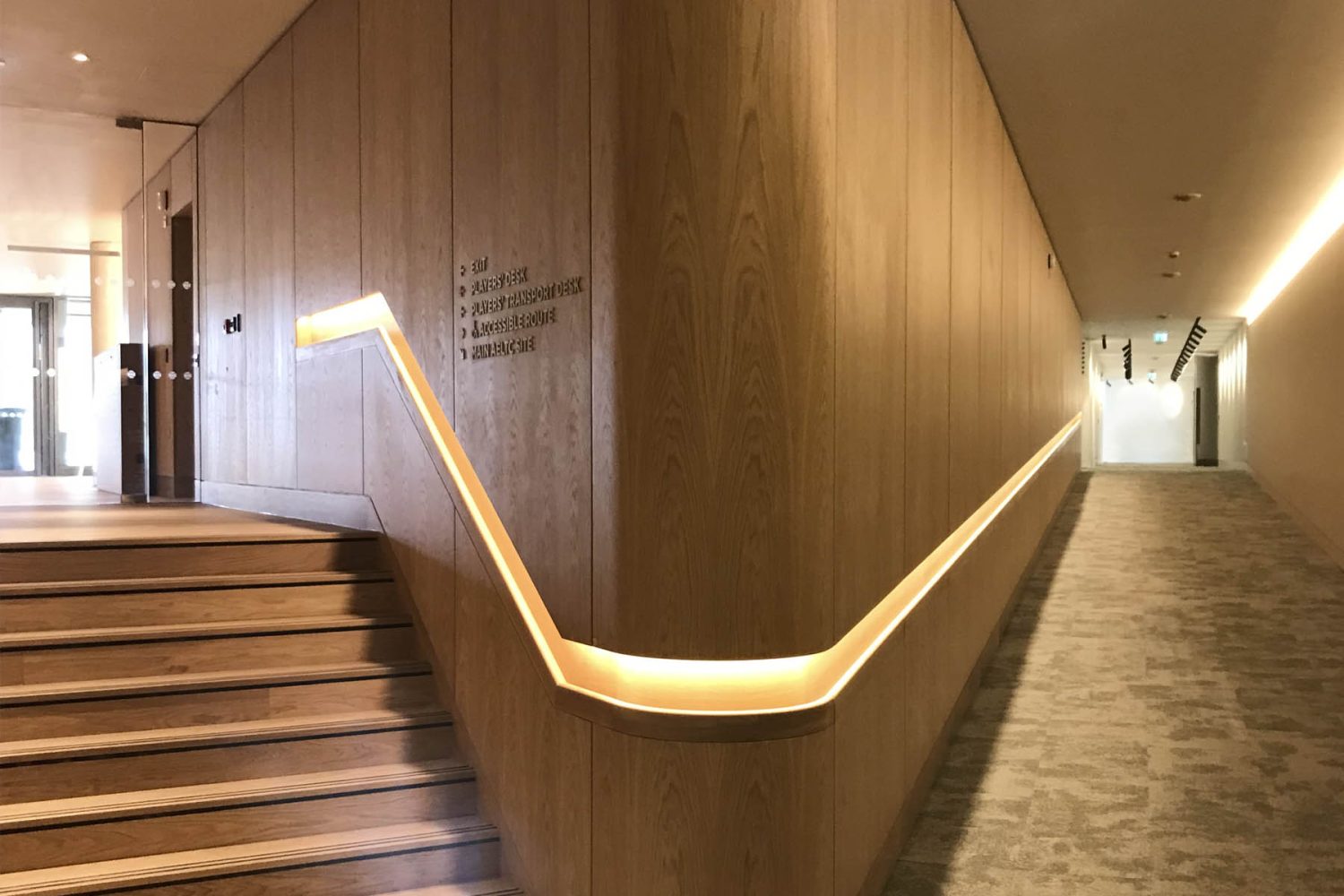Hazlin have their own in-house veneer team and access to veneer, which is available for selection, from both UK and European merchants. Having full control over supply and manufacture ensures we can provide a high quality, fully matched panel project to the high standards of our customers and clients alike.

integrity
Hazlin offer a diverse range of panel products which will add depth and character to any project.


Product Overview
Veneers are any commercially available traditional species:
• Oak
• Maple
• Ash
• Oak
• Maple
• Ash
• More exotic cuts and species:
• Burr walnut
• Special man-made veneers, such as Tabu or Alpi
• Burr walnut
• Special man-made veneers, such as Tabu or Alpi
Panel Products can be described as the following:
• Standard sheets
• Cut sized panels
• Lipped panels
• Lay-ons (Lay-ons can be single veneer skins or 3 ply veneers glued together for fixing to customer substrate)
• Standard sheets
• Cut sized panels
• Lipped panels
• Lay-ons (Lay-ons can be single veneer skins or 3 ply veneers glued together for fixing to customer substrate)
These are full sized sheets (generally, 2440 x 1220 or 3050 x 1220) of mdf, plywood or chipboard sheets that are then veneered in your specified veneer. Boards can be from 4mm thickness to 120mm if required.
The quality of veneer is important
Veneer leaves are cut to a uniform width
The style and quality make a significant difference to the overall visual impact
Advantages
Veneer leaf widths are consistent
Generally they are book matched, but can be slip or random matched or laid to suit customer specification
Veneer is normally taken from consecutive bundles ensuring that the gradual changes that occur in the log are reflected in the veneered board
Veneers can be laid in either horizontal or vertical directions
Boards can be finished to a specified thickness +/-0.5mm
Disdvantages
Getting uniform veneer widths from consecutive bundles is more expensive than buying commercial produced boards
If boards are going to be cut down & panel sizes taken from them, then veneer matching can be difficult to achieve
Wastage may be higher than getting panels specifically made to order
These are panels cut to a customer specified size. As with standard boards the core is manufactured from standard commercially available materials. Hazlin then cut the board to a customer specified size + 4mm. Panels are then veneered in either a specified veneer or customer selected veneer. They are then sent to the CNC department for cutting back to final size.
Advantages
The process ensures that panels are dimensionally very accurate
Panel edges are square, with minimal arris sanding to all edges
Veneer match follows through on each panel
The only variation will be on the amount of veneer overhang on each panel and cutting back of each panel to dead size
Veneer leaf widths are adjusted to suit panel widths Consecutive bundles from logs of veneer are used ensuring grain matching
Veneer can be laid in any direction to suit customer needs
Disdvantages
Raw edge of board visible
A more expensive option to commercially available sheets
Advantages
The process ensures that panels are dimensionally very accurate
Panel edges are square, with minimal arris sanding to all edges
Veneer match follows through on each panel
The only variation will be on the amount of veneer overhang on each panel and cutting back of each panel to dead size
Veneer leaf widths are adjusted to suit panel widths Consecutive bundles from logs of veneer are used ensuring grain matching
Veneer can be laid in any direction to suit customer needs
Disdvantages
Raw edge of board visible
A more expensive option to commercially available sheets
These are cut sized panels that have a solid timber lipping applied. Lipping thickness is normally 10mm, plus the thickness of panel. However the customer can specify lipping thickness taking into account any edge detailing. Normal edging thickness is between 10 and 20mm wide. Hazlin can accommodate many thicknesses. If curved panels are needed then the edging thickness will vary depending on the detail required.
Advantages
Panels are manufactured to suit the specific needs of the customer
Rebates, grooves can be machined in faces or edges to suit the needs of the customer
Veneer matching and direction are ensured
All edging timber is normally concealed by the facing veneer Mitred corners can be formed
Special machining can be carried out
Finish sizes made to +/- 0.5mm
Disdvantages
Cost
Time scale – lipped panels take longer to manufacture than standard boards
Advantages
Panels are manufactured to suit the specific needs of the customer
Rebates, grooves can be machined in faces or edges to suit the needs of the customer
Veneer matching and direction are ensured
All edging timber is normally concealed by the facing veneer Mitred corners can be formed
Special machining can be carried out
Finish sizes made to +/- 0.5mm
Disdvantages
Cost
Time scale – lipped panels take longer to manufacture than standard boards
When manufacturing doors or large panel schemes Hazlin can provide veneers to match any work in progress. Lay-ons are veneers that have been jointed to form sheets. These can be made into thin plywood type materials that can then be sent to the customer for fitting to special units such as vertical face of curved reception desk. Other lay-ons can be manufactured for customers who are manufacturing items in close proximity to a veneered panelling scheme. Hazlin will make veneer lay-ons for the customer to apply to their own substrate.
Key info
Particular attention is placed on the matching of veneers within a scheme
To ensure that the desired effect is achieved the veneer log is laid out to show its character and vibrancy
Panel products are exclusive to the project that they are made for
The only limitation on size is the core materials that are available and equipment needed to process the panels
The skills of the Hazlin veneer department, together with the diligence of experienced pressing, CNC and finishing teams ensure that the panel schemes exhibit the natural beauty of quality veneers being used
Hazlin offers panel products in the following categories:
Wall Panelling – e.g. Reception area panelling
Kitchens
Furniture
Bedroom units & fitments
Ceiling panels
Engraving – for example map of the world
Marquetry, parquetry, patterns & inlays
Panels can be faced in:
Melamine/plastic laminate (in colours, patterns & wood grains)
Real wood veneer
Man-made wood based veneers
Certain types of fabrics, paints & lacquers
Melamine/plastic laminate (in colours, patterns & wood grains)
Real wood veneer
Man-made wood based veneers
Certain types of fabrics, paints & lacquers
Why choose Hazlin?
Highly trained & skilled operatives
Over 40 years of heritage & industry experience
A reputation for high standards & superior quality
Industry-leading machinery & workshop
Dedicated & highly responsive customer service
BM Trada Q-Mark accredited
Our own delivery fleet, dispatching nationwide
